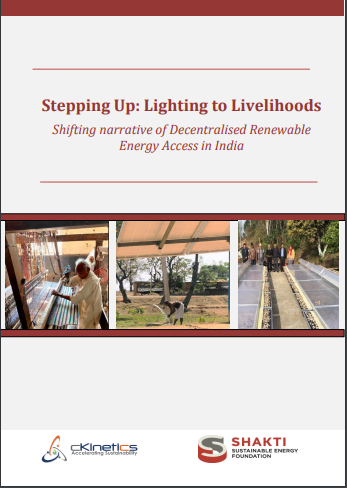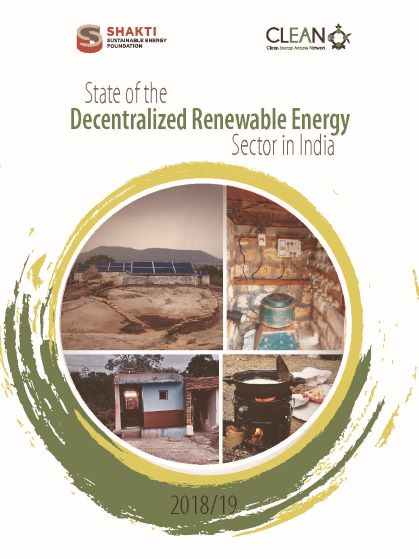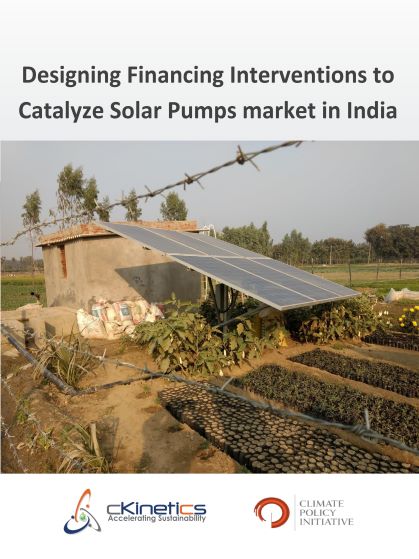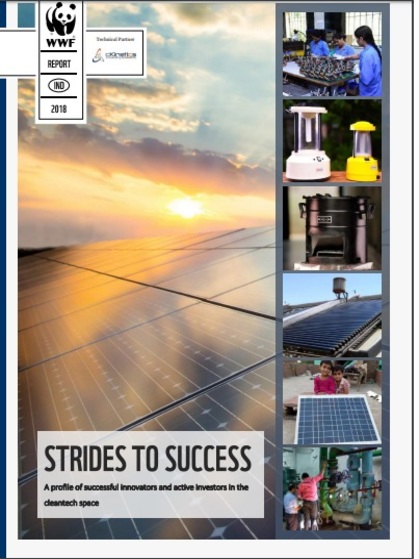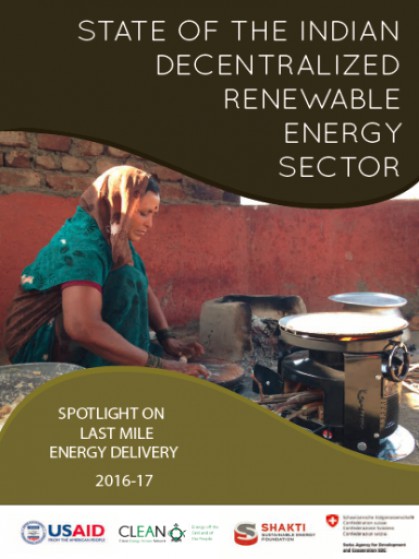Analysis: Enabling effective healthcare provision through resilient energy systems
|
823 Un-electrified Primary health centres |
39,122 Un-electrified
sub-centre |
230 million People dependent on health-care facilities without electricity access |
2200+ Existing health facilities
powered through distributed solar solutions |
INR 6 billion Required funding from government to power un-electrified facilities through solar systems |
1. Rural Healthcare in India
The rural health care infrastructure in India, which entails a total of 189,784[1] healthcare institutions, shoulders the responsibility of serving the medical needs of 65% of the country’s population. The primary tier of health care facilities operates at three levels i.e. the sub-centre, Primary Healthcare Centre (PHC), and the Community Healthcare Centre (CHC) wherein a sub-centre typically serves 4~5 villages, PHC caters to 25 villages and a CHC serves typically 114-119 villages[2]. These centres are usually the ‘first point of contact’ for crucial health-care services such as vaccination, labour and deliveries, neonatal care, eye-care services, etc.
Over the last decade, the government has endeavoured to improve the healthcare metrics in India, but still faces the challenge to shape improvements across all states. The maternal mortality rate (MMR) in India during 2015-17 stood at 122[3] with states such as Assam, Jharkhand, Chhattisgarh, Rajasthan and UP reporting MMR higher than 160. While the rate has improved over the past decade, targets for good health and well-being (SDG 3) aim to reduce the global MMR to less than 70 per 100,000 live births by 2030. Even for vaccination, India has strived to improve and managed the vaccine coverage for children to 62% in 2015, yet certain states (such as Rajasthan, UP, Mizoram, etc.) continue to lag with less than 60% coverage.
There is a well-recognized supply gap in manpower (both doctors and support staff) and essential equipment/infrastructure in existing centres. Even when resources - both human and technical (albeit limited) - are available, there are additional constraints imposed by inadequate supply of electricity limiting the functioning of the equipment thus affecting the provision of services. Given that energy forms an intrinsic part of the health-care infrastructure, it is perceived to be positively correlated with the reliable functioning and delivery of these services. Thus, in order for them to function at their full capacity, it is important that these facilities have a regular and reliable supply of electricity.
2. Interlinkages of electricity and provision of healthcare services
There are many aspects that influence quality of healthcare delivery such as availability of trained medical staff, provision of infrastructure like labour rooms, necessary equipment and sanitation, etc. with energy being a key input for several of the services. At the most basic level, the availability of electricity is crucial for the running of important medical equipment. Apart from in-patient and out-patient services, two most critical services provided by these health centres (especially PHCs and CHCs) requiring regular and reliable supply of electricity, are maternal deliveries and vaccination. Deliveries, especially those that take place at night, require a light source and fans for the comfort of the mother. Moreover, when a child is born, radiant warmers are crucial to ensure the health of the new-born. With regards to refrigerated infrastructure, most vaccines must be kept at a constant temperature of 4 degree Celsius, which requires a regular supply of electricity to the ice-lined refrigerator and the deep freezer. Further, devices such as autoclaves are critical for sterilisation of equipments and other objects. Thus, an improved supply of electricity can especially be seen as positively affecting the provision of these services. The table below highlights the services that are dependent on electricity supply and equipments/appliances typically installed across different kinds of healthcare facilities in rural India.
Table 1: Electricity requirement for provision of healthcare services in different types of facilities
Note: Only essential equipments have been included; Source: IPHS Revised Guidelines 2012
3. Electrification of PHCs in India
The previous table underscores the dependence of healthcare on electricity supply. While the central government has concluded the electrification drive under the Saubhagya scheme, the focus was solely on households and therefore, the health institutions (particularly rural sub-centres) were left out of the purview. As a result, 3.2% of all rural PHCs and 24.7% of all rural sub-centres in India are still un-electrified[4]. The heatmap illustrates the states with un-electrified sub-centre or PHCs in the state i.e. a darker colour indicates that a higher number of un-electrified health centres; while the un-shaded states indicate that it has no unelectrified PHC/sub-centre as per the government data.
Figure 1: Heat-map of the higher number of un-electrified (a) PHCs and (b) Sub-centres in India
With respect to PHCs, Jharkhand lags with over 40% of PHCs (129 PHCs) still un-electrified. However, while the focus has typically been on PHCs, a number of sub-centres seem to have been out of the purview of the government with around 65% of the sub-centres remaining un-electrified in Bihar, Jharkhand and Assam. Moreover, in some of these states, the typical population covered far exceeds the prescribed number of 20,000-30,000 people coverage under the IPHS. For instance, a Jharkhand PHC serves an average rural population of 84,077, while for Bihar, the corresponding number is 48,626. Overall, around 230 million of the rural population is dependent on health-care facilities with no access to power (as highlighted in Table 1). Moreover, even among these centres that have electricity supply, many face intermittent power supply or the supply is marred by voltage fluctuations, which also come in the way of healthcare delivery.
Table 2: Summary of health centres statistics
|
Type of facility |
Total (in rural areas) |
Un-electrified |
No. of rural population
served by each PHC |
No. of rural
population served by un-electrified health centres |
|
PHC |
25743 |
823 |
32,387 |
26 million |
|
CHC |
5624 |
NA |
148,248 |
NA |
|
Sub-Centre |
158417 |
39122 |
5,236 |
204 million |
4. Role of distributed solar solutions in powering the health centres
Given the terrain vulnerability of many of these rural and remote areas, one of the feasible solutions for electrification of rural healthcare is the adoption of solar PV systems, which might either provide complete power supply or might act as a back-up (potentially coupled with storage) to ensure regular power supply, especially during peak hours. With regards to having a backup, PHCs usually tend to rely on diesel generators. But having a solar PV system as a backup provides many more benefits - economically, environmentally and in relation to health. Though, diesel generators have a lower capital cost (INR 90,000 for a 5 kVA system) compared to solar PV systems with a battery (INR 400,000[5] for a 3-hour battery back-up system), they have higher operational expenses. The operational cost of a diesel generator assuming a back-up of 3-4 hours would vary from INR 200,000 annually for a 5kW system, given a delivered cost of diesel of INR 26-27 per kWh[6]. Thus, the energy needs of sub-centres, PHCs and CHCs in rural and remote areas, where there is electricity deficiency, can be fulfilled through off-grid solar installations. Nevertheless, it is necessary to evaluate each centre before finalizing a solar installation to fully account for its energy needs as also to decide whether it needs an installation for the entire load or an installation as backup. Based on the electricity needs of the health centres, government has undertaken efforts to power these facilities either through stand-alone solar systems with battery back-up or grid-interactive solar PV only systems to ensure reliable electricity supply.
In addition to standalone solar systems providing electricity supply to health facilities, energy efficient/innovative appliances are required which are customized for rural requirements and can work even during outages (such as Godrej’s Surechill vaccine and blood bank refrigerator, refer to the article linked below).Thus, several institutions such as GE healthcare, SELCO foundation and Godrej appliances are focussing on coupling energy efficient appliances along-with distributed solar systems. Moreover, institutions like SELCO foundation have also helped enable mobile healthcare facilities by piloting boat clinics to provide healthcare services in Island areas of Assam which are otherwise difficult to reach.
Given that there are multiple stakeholders involved in the health-energy nexus in India, a snapshot of key players in the value chain is illustrated below.
Figure 2: Key players across the 'health-energy' value chain In India
Source: cKinetics analysis
5. Initiatives by the Government
Many state governments have taken initiatives to install off-grid solar PV systems in their respective state rural health centres - funded by either a mix of state (typically health department) and central government support or entirely through state budget; and in certain cases, through partnership between government ministries and international organisations (for example, Maharashtra solarized its PHCs through a partnership between the State Ministry of Health and Family Welfare and UNICEF). Further, for health centres where electricity supply is through ‘alternate electricity supply’ i.e. solar PV systems only, the rural health centres can tap into the existing untied funds, annual maintenance, RKS fund under National Rural Health Mission, etc. which covers ‘purchase/repair/maintenance of inverter, solar home lighting system, generator etc.’ Even as several states such as Punjab, Kerala, Haryana, Bihar etc. have indicated plans to power PHCs with off-grid solar systems under their respective 'Power for All' plans, typically, state governments provide off-grid solar systems under national/central schemes. There are only a few state-specific schemes/projects for powering health centres through solar energy, as highlighted below:
- Nagaland: The ‘Nagaland Health Project’[7], has a component which entails “investment in off-grid electrical power solutions”. Under this component, the state aims to support solar technology for larger facilities and battery and inverter systems for smaller facilities that can charged by grid when it is available.
- Assam: The government of Assam sanctioned a project/scheme to the Assam Power Distribution Company Limited (APDCL) for implementation of ‘Off-grid solar power plant’[8] in 188 rural PHCs under the state budgetary support.
- Puducherry: The ‘Development of Puducherry as Solar City’[9] by the MNRE and the Renewable Energy Agency of Puducherry, has planned for the installation of grid-connected rooftop solar PV in healthcare facilities, including health centres.
Figure 3: Schema for government as implementing agency
While the government has not undertaken a comprehensive impact evaluation, based on discussion with different stakeholders, at least 2,200 health centres in India have been powered through distributed solar solutions.
Chhattisgarh leading the way
Of these, more than 50 per cent have been commissioned in Chhattisgarh where in the Chhattisgarh state health department collaborated with CREDA on a programme to provide solar power at all PHCs. As per estimations, around INR 791 million of financing is expected to have been incurred for these systems by state and central government. Similarly, in Tripura, almost all the PHCs and CHCs have been electrified through distributed solar solutions[10]. On the impact front, PHCs in Chhattisgarh that had a regular supply of electricity saw a 27.8% increase in the median number of deliveries conducted per month. Moreover, the proportion of PHCs with a radiant warmer is higher for PHCs with a regular supply of electricity by almost 14%, which translates to better care for the new born child.[11] At a pan-India level, PHCs with a regular supply of power conducted 50% more deliveries in a month compared to those with no power supply. Similarly, PHCs with a regular power supply and refrigeration facilities provided immunization services to around 50% more children in comparison to those without electricity supply.[12] Further, for grid-connected systems in Maharashtra, 94% of the sampled PHC staff highlighted that SPV system helped them to improve medical services offered to patients, particularly for new-born care unit. Further, the annual electricity costs reduced by 30% post installation of the solar grid-connected systems. Thus, the benefits of having regular electricity supply can be seen across the rural healthcare institutions. Nevertheless, it is also important to note that the delivery and quality of healthcare provided is not only dependent on power supply.
Note: Based on secondary research and primary discussions with SNAs
6. Way Forward
While a comprehensive assessment of every health centre is required, if the government were to power the existing un-electrified health centres in India, states' objectives maybe best met by emulating Chhattisgarh’s footsteps. This would require a minimum cumulative funding of at least INR 6 billion (given a benchmark cost of INR 74 per system for a 3-hour back-up) both from state and central governments. This is excluding centres which currently face intermittent supply of power and can be retrofitted with solar systems to provide reliable electricity supply. There are already initiatives underway by states such as Assam and Kerala who have floated tenders for deployment of off-grid systems for PHCs in their respective states.
Table 3: Opportunity for scaling up solar systems for healthcare in rural India
|
Type of health
centre |
No. of
unelectrified centres |
Cost of
installation (INR billion) |
|
Sub-centre |
39,122 |
INR 5.7
billion |
|
PHC |
823 |
INR 0.29
billion |
|
Total |
39,945 |
INR 6 billion |
Source: cKinetics analysis
While there is evidence for impact of these systems installed in Chhattisgarh, there is need for a comprehensive impact evaluation at a national level, for not only measuring the improvement in provision of services through improved electricity access but also for measuring impact of energy efficient appliances such as solar powered refrigerators and blood collection centres in these states through well-recognised metrics such as immunization rates etc. As the existing ‘Off-grid and decentralised energy application’ scheme is concluding in 2020, there is merit in continuing the scheme beyond 2020, specifically targeting health centres (particularly sub-centres). The implementation and scale up of the scheme would be dependent on coordination between multiple institutes such as the health and the energy department. Lastly, emerging financing and delivery models (as highlighted in the perspectives captured below) can help in scaling up electricity access to rural areas, which would need to be complemented with energy-efficient solutions in this segment.
_______________________________________________________
[1] https://nrhm-mis.nic.in/
[2] https://wcd.nic.in/sites/default/files/RHS_1.pdf
[3] https://pib.gov.in/newsite/PrintRelease.aspx?relid=194365
[4] Rural Health Statistics, 2019
[5] https://mnre.gov.in/sites/default/files/webform/notices/Benchmark%20Order%20FY%202019-20.pdf
[6] cKinetics analysis
[7] https://nagalandhealthproject.org/component-2-activities/
[12] https://www.ceew.in/sites/default/files/CEEW-The-State-of-Electricity-Access-for-Primary_0.pdf
